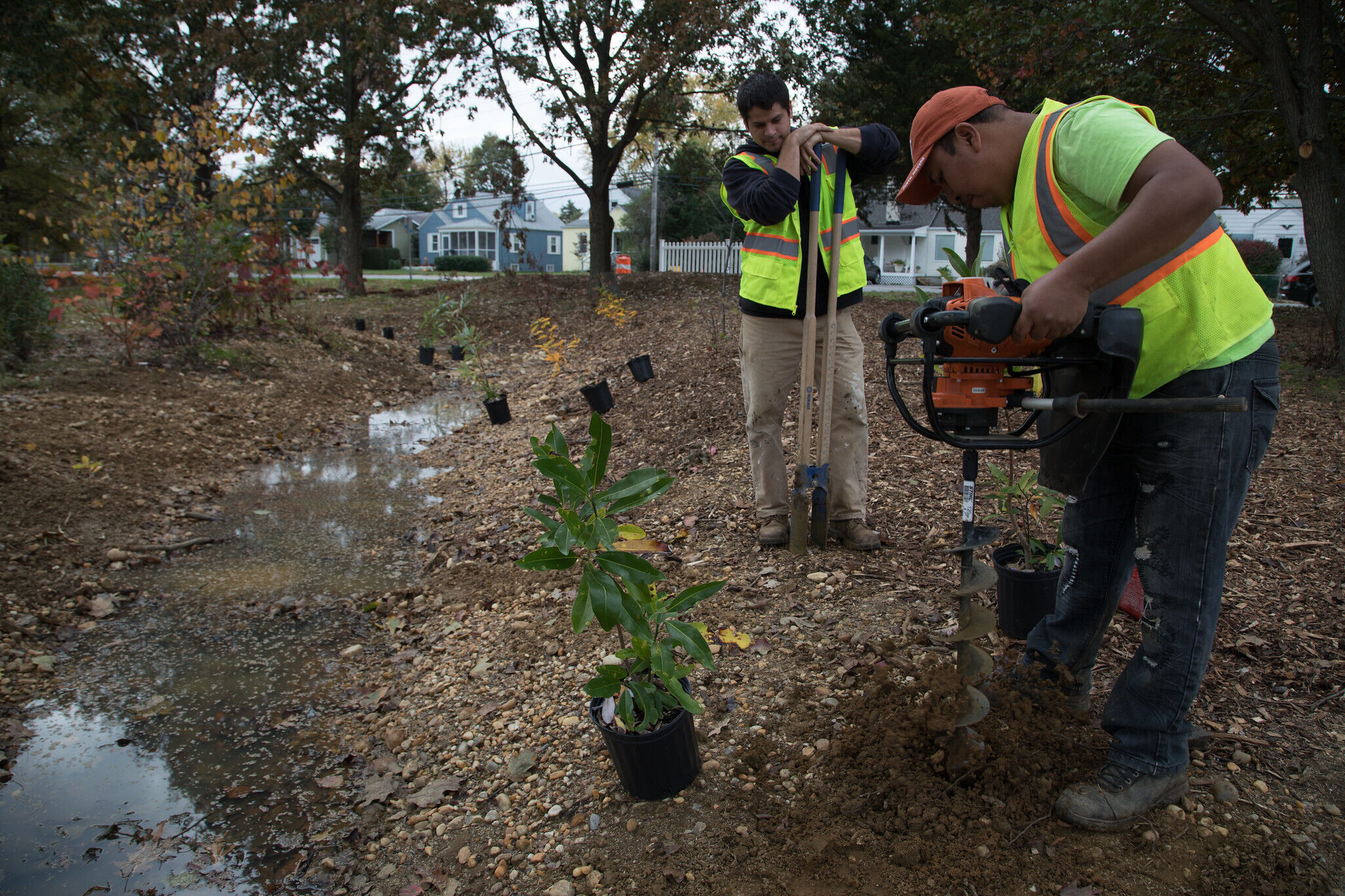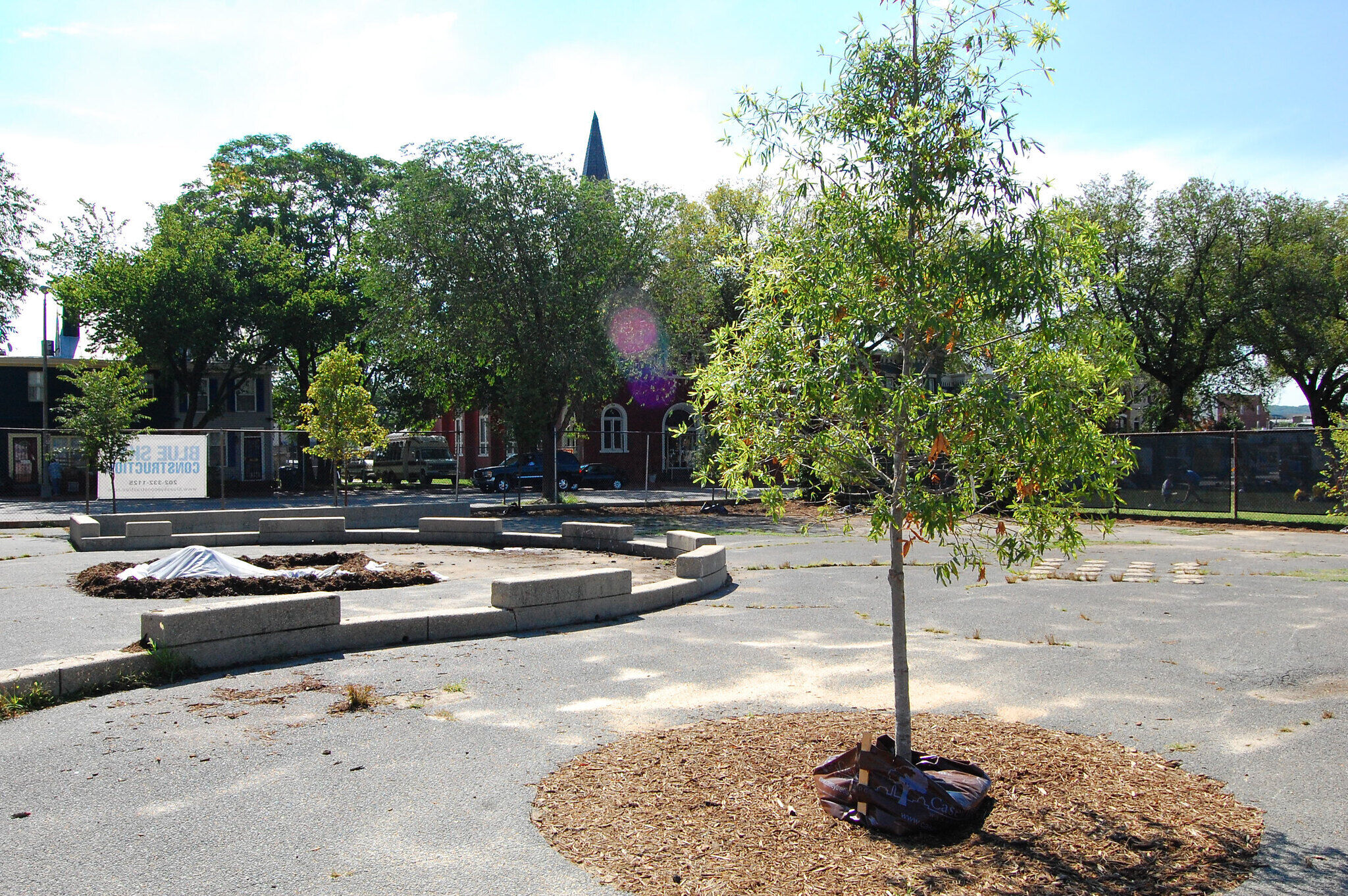The Story of Streams report from the Audubon Naturalist Society surveys conditions in and around three D.C.-area watersheds that the group aims to support through public engagement.
The waterways are:
- The Northwest Branch of the Anacostia River in Maryland’s Montgomery and Prince George’s counties, that’s said to be in “Fair” condition.
- Holmes Run in Fairfax County, Virginia, that’s almost entirely within the Capital Beltway, is said to be in “Fair” condition.
- Oxon Run, a watershed in D.C. and Prince George’s County, Maryland, that reaches the Potomac River at Oxon Cove and is said to be in “Moderately Poor” condition.
The scores are based on multiple factors within the categories of Water Quality, Climate, Access to Nature, and Biodiversity & Habitat. The methodology for score values is explained on the group’s website.

The Climate category, for example, includes rankings for air quality, wetlands, tree canopy and the stream buffer, which is the width of the forested area along the sides of streams.
Historically, the D.C. region was predominantly forests and streams, edged by wetlands and meadows. But now the director of conservation for the Audubon Naturalist Society describes what’s left as little more than a mustache-like buffer of trees around streams.
“Those remaining trees are so critical — that forest buffer — that’s where a lot of the pollution capture occurs. That’s where the trees can keep the stream water itself cool. And that’s where the animals that use the streams as migratory corridors can move through the trees. So the buffer is super important,” Eliza Cava said.
Scores for each of the broad categories show each stream has areas in need of improvement and they have universally shared strengths.
“Access to nature was actually the standout for all of them. But it was also the highest score category for Oxon Run,” Cava said.
“Oxon run has beautiful parkland, both National Park Service lands, and very accessible lands in Washington, D.C., managed by the Department of Parks and Recreation. Oxon Run Park, that has the biggest collection of Japanese cherry trees after the Tidal Basin. And it’s a wonderful place to go and walk without so many crowds in the spring.”
The three streams also share issues most in need of improvement.
“Universal amongst all of them is less pavement, more trees — and especially wetlands, and cleaner air,” Cava said.
Noting that water quality is impacted by little organisms and insects that live in streams, Cava said the way to help those creatures is by having less pavement and more trees to slow down water to remove pollution before it flows into streams.
Cava believes the report findings are a call to action for people to join local watershed groups and volunteer to plant trees to remove invasive vines; speak to elected officials; and advocate for better decisions about land use.
“We need streams. That’s what the access scores tell us. And streams need us. That’s what the water quality scores and the other scores tell us,” she said.
“Without these streams where people can take walks, where we have a lot of our parkland located, our region would just be overall a much poorer place, [with] much less quality of life.”









